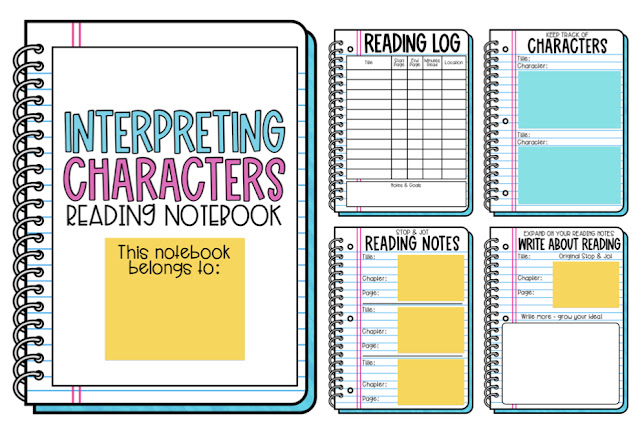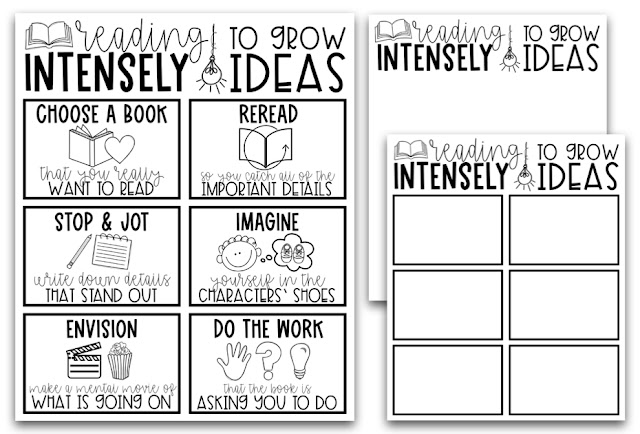I just finished up the plans and resources for the first bend of the first 4th grade reading unit, Interpreting Characters, and I wanted to share some helpful information and a FREE sample with you!
Before we get started, I just wanted to let you know that this unit is NOT DONE. The plans and resources for bends I & II are included, but when I asked you guys on this post on Instagram when you were heading back to school, many of you responded that you had already started or were starting soon, so I wanted to get this resource to you as soon as possible!
THE GOOGLE DOC
When you purchase this unit, you will receive a link to a Google Doc called Interpreting Characters Overview & Lesson Plans (pictured below). This document is the homepage for everything that you need to teach this unit! It includes an overview of the skills taught in each bend, an overview of each session, lesson plans for each session, and links to all of the anchor charts and resources for students.
Because I know that not every school is doing distance learning and, for those that are, not all are using the same platform(s), I have included Google, Powerpoint, and PDF versions of all of the resources for this unit. In the Resource Table of Contents section, you can select the format that you need and download that directly from my Google Drive!
GETTING READY TO TEACH THIS UNIT
The read aloud for this entire unit is the book The Tiger Rising by Kate DiCamillo. I was able to borrow the e-book from my library, but you can also get a digital copy on your Kindle through Amazon or on your iPad through the iTunes book store (it was only $2.99 on there the last time I checked). Your students do not need their own copies of this book, but they will need access to multiple fictional texts to practice applying all of the skills that you teach & model with the read aloud.
THE READING NOTEBOOK
I have included digital versions (Google Slides & Powerpoint) of the notebook that contain editable boxes for students to type into as well as PDF versions in color and black and white that can be printed and filled out by hand.
The Reading Notebook contains 6 pages that students can use to take notes and complete assignments throughout this unit. The following pages are included:
- Cover: Editable cover page where students can write their names.
- Reading Log: A place for students to record titles, pages read, minutes read, and location. There is also a section for students to take notes on their progress and set reading goals.
- Keep Track of Characters: A page for students to jot down notes about characters.
- Stop & Jot Reading Notes: A page for students to write short notes with important details and things that stand out to prepare for conversations about their books and for writing about reading.
- Write About Reading: A page for students to expand on the notes that they jotted while reading.
- Reading List: A place for students to keep a list of the books that they would like to read.
LESSON PLANS

ANCHOR CHARTS
There are four anchor charts that you will need to teach the lessons in the first bend of this unit:
- Reading Intensely: On this chart you will record strategies and tips for reading carefully and paying close attention to details in the story in order to form substantial ideas.
- Figuring Out If A Book Is Just Right For You: You will use this chart to teach students how to determine whether a book is too easy, too hard, or just right for them.
- Finding Books That We Want to Read: You will use this chart to record student input from an inquiry that you lead about how students will discover and obtain books that they want to read.
- From Retelling to Summarizing: You will use this chart to teach students the difference between a chronological retelling of events and a summary/synthesis of recent events that includes relevant information and events from earlier parts of the story.
For each anchor chart, I have included multiple options so you can choose how you would like to use them. You can simply print out or project the completed versions and share them with students or use them to guide your teaching as you complete the charts together. There are also blank versions of the charts with only titles and headings/subheadings that you could fill out with your class as you teach each lesson and students provide input. Below is an example of a completed chart and the options for blank charts that you would complete with your class.
FREE SAMPLE
Click on the image below to visit the page that this unit is listed on in my TPT store. In the preview, you will receive the lesson plan for Session 1. You may use the picture on this blog post to recreate the Reading Intensely anchor chart that is needed for this lesson.












I love what you have done with Bend 1 & 2. It has made life so much easier. Any idea when Bend 3 will be completed? Thank you:)
ReplyDelete